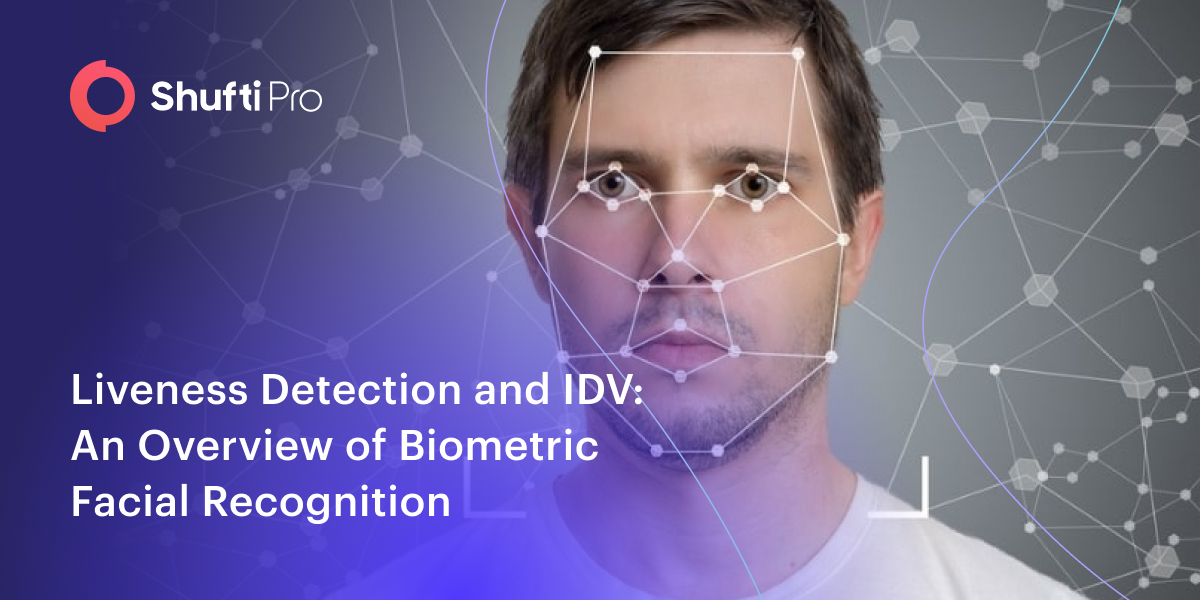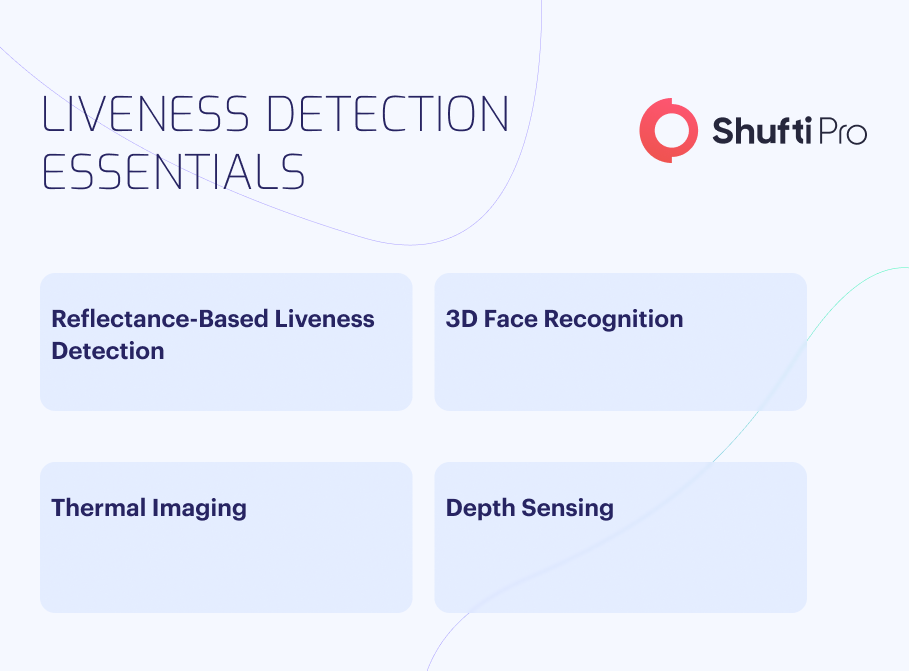Liveness Detection and IDV: An Overview of Biometric Facial Recognition

Identity fraud and cybercrime have significantly surged in the past few years. Deepfake technology has become more sophisticated, with an 84% increase in deepfake creation models from 2019 to 2020. We’re beginning to see cybercriminals utilize deepfake technology more to bypass security protocols set by businesses – so detection of this new technique is critical to ensure your organization’s safety.
Most deepfakes are forged by using AI and ML technologies, holographic models allow these criminals to create a simulated mesh through machine learning. The question is the legitimacy of the deepfakes, how are they able to bypass security protocols? This is because they use stolen information from users and individuals subjected to data breaches and identity theft also become victims of deepfake forgery. Their stolen information is used to forge and simulate a deepfake. This way, criminals stay in the shadows and use someone else’s identity to commit crimes.
Biometric Facial Recognition: Its Use in IDV
To effectively battle the threat of criminals using forged identities to bypass security protocols, businesses need to ensure that they have a robust security solution in place.
Biometric facial recognition is a mechanism that is often paired with the identity verification process to ensure that any forged documents are not being used to carry out fraud. Biometric facial recognition is carried out using both active and passive verification methods. Once users enter their information, they must verify a face ID check in real-time or upload a verified picture. The most common biometric facial recognition methods are:
- Facial Recognition
- Iris Recognition
- Retina Recognition
- Behavioral Biometrics
- Facial Thermography
Real-time facial recognition is more efficient as it is more likely to catch criminals using stolen on-paper information. Biometric facial recognition verifies unique facial features, such as skin and iris patterns, to authenticate the user. An entity using stolen information is very likely to be detected at this security checkpoint. The first step in this security procedure is to enroll facial data. This data is then cross-checked against official government data sources to ensure 3-D facial liveness. If the biometric facial recognition requirements are not met, the user in question is either eliminated or restricted from proceeding further.

What is Liveness Detection?
Liveness detection is essential to biometric facial recognition, as it helps prevent advanced threats. Biometric facial recognition can be bypassed as it is not active verification, and any criminal can create a fake identity. Using editing software, a fake biometric identity can be created. Liveness detection makes biometric facial recognition even more robust. Businesses can utilize it to verify their users in real-time.
Once a user reaches a specific security checkpoint, the software requires them to verify their identity using the facial biometric verification method. Biometric solutions paired with liveness detection accurately verify the user with their flawless verification technology. These solutions are integrated 3-D liveness detection that makes sure a user is accurate, and it is not an edited picture or a fake simulation. Afterward, a liveness detection exercise is also carried out. Users must perform specific actions that determine whether the user being onboarded is an actual entity or a simulation.
The most commonly used liveness detection methods are:
-
Texture Analysis
This method is used to detect natural and artificial variations in skin textures. Every person’s skin has a specific texture that can not be replicated. A 3D liveness check helps companies distinguish between a natural person’s skin texture and a printed or digital representation. This way, a deep fake can be identified and eliminated.
-
Motion Analysis
This aspect of liveness detection tracks the movements of the user. Full-body movements and micromovements are both tracked. These include acts such as blinking, moving eyes, head tilting, and facial expressions. These acts have no specific pattern and cannot be anticipated. On the other hand, a deepfake has repeating movements and motion, which is repetitive because it is pre-programmed.
-
3D Depth Sensing
Modern security systems employ advanced technologies such as structured light or time-of-flight cameras to create a highly detailed three-dimensional map of an individual’s face. This enables the system to effectively differentiate between a natural, live person and a two-dimensional image or a pre-recorded video, ensuring strict measures are in place to prevent unauthorized access or fraudulent activities.
-
Infrared Imaging
Infrared imaging uses lenses to detect light wavelengths that are specific to the human skin and are not visible to the human eye in regular cases. An actual entity will produce these wavelengths, while a deepfake will not produce them. This helps businesses with face-anti spoofing and differentiating deepfakes.
The Benefits of Liveness Detection
3-D facial liveness detection is a process that can help businesses significantly elevate their security with their accurate verification processes.
-
Prevention of Anti-Spoofing Attacks
Liveness detection is a security feature that helps prevent unauthorized access by detecting and mitigating attempts at impersonation through the use of liveness detection in authorizing photos, videos, or other non-living representations of a person’s face. This technology ensures that the presented facial features belong to a live person, providing an additional layer of security against fraudsters.
-
Enhanced Security
Entities such as scammers, fraudsters, money launderers, and illegal financiers are always looking for companies they can use as a middle gateway to wash their black money. These entities try their best to infiltrate business systems, and using deepfake technology is one of the primary methods. Liveness detection keeps these entities off of a business’s radar and allows firms to proceed with their functions safely.
-
Compliance with Regulations
Global rules and regulations allow businesses to comply with global AML/CFT rules and regulations. Global regulatory bodies require companies to comply with strict regulations regarding financial crime and illegal activities. The companies that fail to comply with these regulations are subject to hefty fines and charges that can have a grave impact on the company’s overall finances, so it is better to avoid these charges instead of facing the consequences.
-
Convenient User-Experience
Modern liveness detection is an alternative to biometric facial recognition, allowing companies to deploy a more seamless verification solution. This is convenient because it will enable companies to conduct facial verification in seconds, giving them instant results. User convenience is also a significant factor because users have an automated facial recognition process that requires no physical presence or extra documents.
Overall, biometric facial recognition with liveness detection offers a powerful and convenient solution for identity verification (IDV) in various industries. By effectively complementing your liveness verification processes, this technology can significantly build trust and security in the digital world.
Liveness Detection with Shufti
Shufti’s advanced machine learning mechanisms perform 3D depth analysis to the highest level by using appropriate reference data. Our full-scale verification solution provides businesses with a suite of verification solutions paired with liveness detection. Our solutions establish the real persona of an entity, which also guards against facial spoof attacks.
Our verification solutions help businesses achieve optimal performance with an accuracy of up to 99% in their user-verification processes. Shufti takes every measure to handle deepfakes, and our IDV experts are always there for assistance.
Still unsure about your biometric verification needs? Talk to an expert now and achieve your verification goals with Shufti biometric facial recognition and liveness detection.











